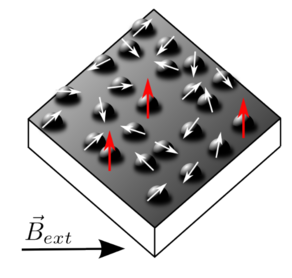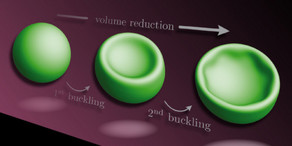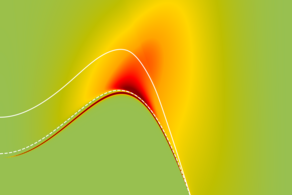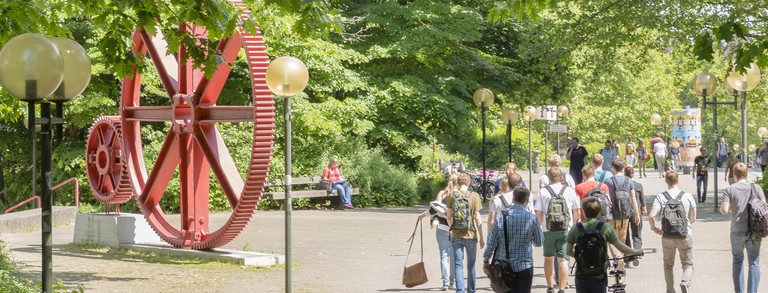Publications
2021
- J. Methorst, N. van hilten, H.J. Risselada,
Inverse design of cholesterol attracting transmembrane helices reveals a paradoxical role of hydrophobic length
bioRxiv 2021.07.01.450699, 2021 - T. John, J. Adler, C. Elsner. J. Petzold, M. Krueger, L.L. Martin, D. Huster, H.J. Risselada, B. Abel,
Size Matters: A Mechanistic Model of Nanoparticle Curvature Effects on Amyloid Fibril Formation
bioRxiv 2021.07.01.450782, 2021 - D. Mehner-Breitfeld, M.T. Ringel, D.A. Tichy, L.J. Endter, K.S. Stroh, H. Luensdorf, H.J. Risselada, Thomas Brueser
TatA and TatB generate a hydrophobic mismatch that is important for function and assembly of the Tat translocon in Escherichia coli
bioRxiv 2021.05.26.445790 (→eLife), 2021 - K.S Stroh, H.J. Risselada
Quantifying membrane curvature sensing of peripheral proteins by simulated buckling and umbrella sampling
in press (JCTC), 2021 - H.J. Risselada
A coarse-grained force-field with an eye for atomic detail
Nature Methods, 18(4):342-343, 2021
2020
- H.J. Risselada, H. Grubmüller
How proteins open fusion pores: Insights from molecular simulations
Eu. Biophys. J., 50(2):279-293, 2020 (Special issue attributed to the ending of DFG SFB803) - Laura J. Endter, H.J. Risselada
Where are those lipidic nano rings?
J. Colloid Interface Sci., 587:789-796, 2020 - Laura J. Endter, Y.G.Smirnova, H.J. Risselada
Density Field Thermodynamic Integration (DFTI): A ’soft’ approach to calculate the free energy of surfactant self-assemblies
J. Phys. Chem. B, 124(31):6775–6785, 2020 - N. van Hilten, K.F. Stroh, H.J. Risselada
Membrane Thinning Induces Sorting of Lipids and the Amphipathic Lipid Packing Sensor (ALPS) Protein Motif
Front. Phys., 11:250, 2020 - L.A. Belyaeva, L. Jiang, A. Soleimani, J. Methorst, H.J. Risselada, G.F. Schneider
Liquids relax and unify strain in graphene
Nat. Comm. 11(898), 2020 - E.M. Blokhuis, M. D'Agostino, A. Mayer, H.J. Risselada
Fusion pores live on the edge
J. Chem. Phys. Lett., 11(4):1204–1208, 2020 - T. John, J. Bandak, N. Sarveson, C. Hackl, H.J. Risselada, A. Prager, C. Elsner, B. Abel
Growth, Polymorphism, and Spatially Controlled Surface Immobilization of Biotinylated Variants of IAPP21-27 Fibrils
bio Macromolecules, 21(2):783–792, 2020 - H.J.Risselada, A. Mayer
SNAREs, tethers and SM proteins: How to overcome the final barriers to membrane fusion?
Biochem. J., 477(1):243-258, 2020
2019
- V. Zoni, V. Nieto, L.J. Endter, H.J. Risselada, L. Monticelli, S. Vanni
To Bud or Not to Bud: A Perspective on Molecular Simulations of Lipid Droplet Budding
Front. Mol. Biosci., 6(124), 2019 - H.J. Risselada
Cholesterol: The Plasma Membrane’s Constituent that Chooses Sides.
Biophys. J., 116(12): 2235--2236, 2019. - Y.G. Smirnova, H.J. Risselada, M. Müller
Thermodynamically reversible paths of the first fusion intermediate reveal an important role for membrane anchors of fusion proteins
PNAS 116(7): 2571-2576, 2019
2018
- T. John, A. Gladytz, C. Kubeil, L.L. Martin, H.J. Risselada, and B. Abel
Impact of nanoparticles on amyloid peptide and protein aggregation: a review with a focus on gold nanoparticles
Nanoscale 10(45):20894-20913, 2018 - M. D'Agostino, H. J. Risselada, L. Endter, and A. Mayer
SNARE-mediated membrane fusion arrests at fusion pore expansion to regulate the volume of an organelle
Embo J. 37(19): e99193, 2018 - H. Grubmüller, R. Jahn, H. J. Risselada
Steric and energetic challenges in SNARE-mediated fusion of membranes
J. Phys. D: Appl. Phys. 51: 343001, 2018 (theme "The 2018 biomembrane curvature and remodeling roadmap")
2017
- M. D'Agostino, H. J. Risselada, A. Lürick, C. Ungermann, and A. Mayer
A tethering complex drives the terminal stage of SNARE-dependent membrane fusion
Nature, 551: 634-638, 2017 - H.J. Risselada
Membrane fusion stalks and 'lipid rafts': A love-hate Relationship
Biophysical J. (Letter), 112(12): 2475-2478, 2017
2016
- G. Bubnis, H.J. Risselada, H. Grubmüller
Exploiting Lipid Permutation Symmetry to Compute Membrane Remodeling Free Energies
Phys. Rev. Lett., 117:188102, 2016 - M. D'Agostino, H.J. Risselada, A. Mayer
Steric hindrance of SNARE transmembrane domain organization impairs the hemifusion-to-fusion transition
EMBO reports, 17(11):1590-1608, 2016 - A. Gladytz, B. Abel, H.J. Risselada
Gold-Induced Fibril Growth:The Mechanism of Surface-Facilitated Amyloid Aggregation
Angew. Chem. Int. Ed. 55:12242-46, 2016 - A. Gladytz, T. John, T. Gladytz, R. Hassert, M. Pagel, S. Naumov, H.J. Risselada, S. Naumov, A.G. Beck-Sickinger, B. Abel,
Peptides@mica: from affinity to adhesion mechanism
Phys. Chem. Chem. Phys., 18:23516-23527, 2016
2015
- H. Osadnik, M. Schöpfel, E. Heidrich, D. Mehner, H. Lilie, C. Parthier, H.J. Risselada, H. Grubmüller, M.T. Stubbs, T. Brüser
The PspF-binding domain PspA1-144 and the PspAF complex -- New insights into the coiled-coil dependent regulation of AAA+ proteins
Mol. Microbiol., 98(4):743-759, 2015 - J. Taubert, B. Hou, H.J. Risselada, D. Mehner, H. Lünsdorf, H. Grubmüller, T. Brüser
TatBC-Independent TatA/Tat Substrate Interactions Contribute to Transport Efficiency
PLoS ONE, 10(3):e011976, 2015 - H.J. Risselada
Simulations Move Toward a Cure for Viral Diseases
Structure, 23(3):439-440, 2015 - D. Milovanovic, A. Honigmann,..., H.J. Risselada, ..., S.W. Hell, G. Van den Bogaart, R. Jahn
Hydrophobic mismatch sorts SNARE proteins into distinct membrane domains
Nature communications, 6:5984, 2015
2014
- H.J. Risselada, Y. Smirnova, H. Grubmüller
Free energy landscape of rim-pore expansion in membrane fusion
Biophys. J., 107: 2287-2295, 2014 - H.J. Risselada, G. Bubnis, H. Grubmüller
Expansion of the fusion stalk and its implication for biological membrane fusion
Proc. Natl. Acad. Sci. USA., 111:11043-110487, 2014
2013
- Y.G. Smirnova, S. Aeffner, H.J. Risselada, T. Salditt, S.J. Marrink, M. Müller, V. Knecht
Interbilayer repulsion forces between tension-free lipid bilayers from simulation
Soft Matter, 9:10705-10718, 2013 - A. Honigmann, G. Van den Bogaart, E. Iraheta, H.J. Risselada, D. Milovanovic, V. Mueller, S. Mueller, U. Diederichsen, D. Fasshauer, H. Grubmüller, S.W. Hell, C. Eggeling, K. Kühnel, R. Jahn
Phosphatidylinositol 4,5-bisphosphate clusters act as molecular beacons for vesicle recruitment
Nat. Struct. Mol. Biol., 20:679-686, 2013
2012
- H.J. Risselada, G. Marelli, M. Fuhrmans, Y.G. Smirnova, H. Grubmüller, S.J. Marrink, M. Müller
Line-Tension Controlled Mechanism for Influenza Fusion
PLoS ONE, 7:e38302, 2012 - T. Fischer, H.J. Risselada, R.L.C Vink
Membrane lateral structure: The influence of immobilized particles on domain size
Phys. Chem. Chem. Phys., 14:14500-14508, 2012 - H.J. Risselada, H. Grubmüller
How SNARE molecules mediate membrane fusion: Recent insights from molecular simulations
Curr. Opin. Struct. Biol., 22:187-196, 2012
2011
- G. Van den Bogaart, K. Meyenberg K, H.J. Risselada, H. Amin, K.I. Willig, B.E. Hubrich, M. Dier, S.W. Hell, H. Grubmüller, U. Diederichsen, R. Jahn
Membrane protein sequestering by ionic protein-lipid Interactions
Nature, 479:552-55, 2011 - G. Van den Bogaart, S. Thutupalli, H.J. Risselada, M. Holt, D. Riedel, S. Herminghaus, H. Grubmüller, R. Jahn
Synaptotagmin-1: a distance regulator acting upstream of SNARE nucleation?
Nat. Struct. Mol. Biol., 18: 805-812, 2011 - H.J. Risselada, C. Kutzner, H. Grubmüller
Caught in the act: Visualization of SNARE-mediated fusion events in molecular detail
Chembiochem, 12:1049-1055, 2011 - H.J. Risselada, S.J. Marrink, M. Müller
Curvature-dependent elastic properties of liquid-ordered domains result in inverted domain sorting on uni-axially compressed vesicles
Phys. Rev. Lett., 106: 148102, 2011
2010
- A.J. Rzepiela, L.V. Schafer, N. Goga, H.J. Risselada, A.H. de Vries, S.J. Marrink
Reconstruction of atomistic details from coarse grained structures
J. Comp. Chem., 31:1333-1343, 2010 - M. Louhivuori, H.J. Risselada, E. van der Giessen, S.J. Marrink.
Release of stress through mechanosensitive channels in pressurized liposomes
Proc. Natl. Acad. Sci. USA., 107:19856-19860, 2010
2009
- S. Esteban-Martin, H.J. Risselada, J. Salgado, S.J. Marrink
Stability of asymmetric lipid bilayers assessed by molecular dynamics simulations
JACS, 131:15194-15202, 2009 - H.J. Risselada, S.J. Marrink
The freezing process of small lipid vesicles at molecular resolution
Softmatter, 5:4531-4541, 2009 - H.J. Risselada, S.J. Marrink
Curvature effects on lipid packing in liposomes revealed by coarse grained molecular dynamics simulations
Phys. Chem. Chem. Phys., 11:2056-2067, 2009 - O.H.S. Ollila, H.J. Risselada, M. Louhivuori, E. Lindahl, I. Vattulainen, S.J. Marrink
3D Pressure distribution in lipid membranes and membrane-protein complexes
Phys. Rev. Lett., 102:078101, 2009
2008
- H.J. Risselada, S.J. Marrink
The molecular face of lipid rafts in model membranes
Proc. Natl. Acad. Sci. USA., 105:17367-17372, 2008 - S. Baoukina, L. Monticelli, H.J. Risselada, S.J. Marrink, D.P. Tieleman
The molecular mechanism of lipid monolayer collapse
Proc. Natl. Acad. Sci. USA., 105:10803-10808, 2008 - H.J. Risselada, A.E. Mark, S.J. Marrink
The application of mean field boundary potentials in simulations of lipid vesicles
J. Phys. Chem. B, 112:7438-7447, 2008 - V. Knecht, H.J. Risselada, A.E. Mark, S.J. Marrink
Electrophoretic mobility does not always reflect the charge on an oil droplet
J. Colloid. Int. Sci., 318:477-486, 2008
2007
- S.J. Marrink, H.J. Risselada, S. Yefimov, D.P. Tieleman, A.H. de Vries
The MARTINI forcefield: coarse grained model for biomolecular simulations
J. Phys. Chem. B, 111:7812-7824, 2007
2005
- S.J. Marrink, J. Risselada, A.E. Mark
Simulation of gel phase formation and melting in lipid bilayers using a coarse grained model
Chem. Phys. Lip., 135:223-244, 2005







